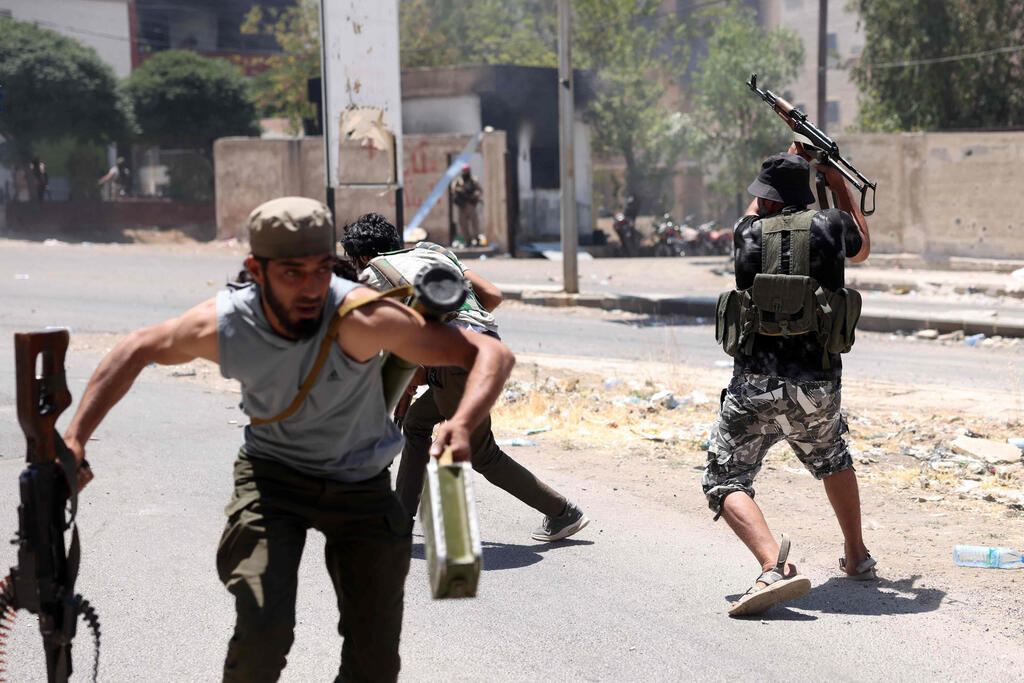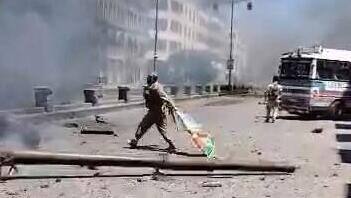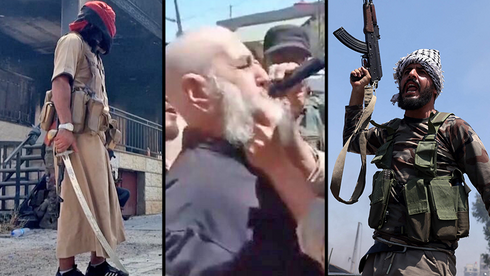A Bedouin militiaman shaves the facial hair of a Druze cleric in Sweida in a deliberate act of humiliation
Over the past week of fighting in Sweida province, at least 940 people have been reported killed. Saturday evening, Syrian state media reported that the Bedouin fighters had begun withdrawing from Sweida city, the provincial capital, under a government-brokered agreement that has so far not been honored in full. It remains unclear whether the fighting has truly subsided.
Armed Bedouin tribesmen enter Sweida
18 View gallery


Fierce street clashes between Druze fighters and Bedouin tribesmen in Sweida
(Photo: Bakr ALKASEM / AFP)
‘We will slaughter the Druze in their homes’
So far, no regime forces have been confirmed entering Sweida city itself, and al-Sharaa has struggled to fulfill his pledge to reestablish order. Fierce street battles broke out between Druze and Bedouin fighters, with AFP reporters on the ground confirming that Bedouin gunmen managed to breach Druze defenses and push into the city’s western neighborhoods. One armed tribesman, who identified himself only as Abu Jassem, told AFP that “we will slaughter them (the Druze) in their homes”.
18 View gallery


A suspected jihadist fighter seen throwing a Druze flag into a street fire in Sweida
An AFP correspondent on Saturday saw dozens of torched homes and vehicles and armed men setting fire to shops after looting them. Thick smoke blanketed the skyline. Some Bedouin fighters were seen brandishing rifles and swords; one man displayed a pair of scissors used, he said, to shave the mustaches of Druze sheikhs. In footage from the city, a suspected jihadist fighter was seen throwing a Druze flag into a street fire.
Al-Sharaa blames the Druze, but promises to protect them
Al‑Sharaa reiterated his pledge to protect the Druze minority and condemned the massacres committed against them. “Sweida province remains an integral part of the Syrian state, and the Druze constitute a fundamental pillar of the Syrian national fabric,” he said. “The Syrian state is committed to protecting all minorities and will continue prosecuting all violators. We repudiate all crimes and breaches, whether inside Sweida or beyond, and stress the importance of justice and the rule of law. In these sensitive times, reason and wisdom must prevail. Syria is not a venue for partition projects or sectarian incitement.”
One Bedouin field commander posted a video from Sweida in the afternoon, rejecting al‑Sharaa’s call to honor the ceasefire. The commander, Sami al‑Hafal, vowed not to withdraw until the Syrian regime extended full control over the entire province.
“We have no problem with the people of Sweida or with unarmed Druze, elders or women,” he said. However, he accused Druze fighters of forcing Bedouin residents to flee their homes. “They violated our honor,” he said. “Even if Sweida becomes a graveyard for the tribes, we will not leave.” Despite this, reports emerged later in the day that Bedouin forces had begun pulling out of the city.
The ceasefire was initially announced on Wednesday after five days of intense fighting. But by the following day, clashes had already resumed between Druze and Bedouin fighters. Overnight Saturday, U.S. Special Envoy to Syria Tom Barrack—who also serves as ambassador to Turkey—announced a new truce, this time between Syria and Israel. Israel reportedly had agreed a day earlier to allow regime forces to reenter Sweida to restore order, despite their involvement in earlier atrocities against Druze civilians and ongoing distrust of al‑Sharaa.
“In al-Shara’s Syria, it is very dangerous to be a member of a minority—Kurd, Druze, Alawite, or Christian,” Sa’ar wrote. “This has been proven time and again over the past six months.”
According to the latest figures from the UK-based Syrian Observatory for Human Rights, at least 940 people have been killed in the fighting so far. The group’s breakdown shows 588 Druze killed—326 of them fighters and 262 civilians. Of these, 182 Druze were executed by regime forces. In addition, 312 regime fighters and 21 Bedouin combatants were killed, including three Bedouin civilians reportedly executed by Druze gunmen. Another 15 regime soldiers were killed in Israeli airstrikes. The United Nations estimates that 87,000 people have been displaced since the start of the violence.


